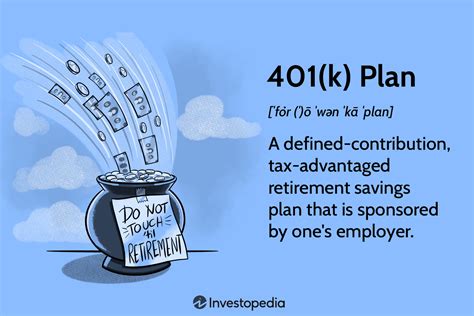
A potential real estate “catastrophe” looms in the U.S., but baby boomers could disproportionately benefit, according to billionaire investor Peter Thiel. He argues that demographic shifts, coupled with existing economic conditions, are setting the stage for a significant transfer of wealth driven by housing market dynamics.
Peter Thiel, speaking at a recent event, warned of a coming real estate downturn, highlighting the precarious situation faced by younger generations struggling to afford homes while older generations stand to gain. “There is a catastrophe ahead. It’s a catastrophe in many ways driven by demographics, where a lot of Boomers are getting old,” Thiel stated, emphasizing the looming crisis. This dynamic, he suggests, could further exacerbate existing wealth inequalities and create new challenges for the American economy. Thiel’s analysis points to a confluence of factors contributing to this impending situation, including high inflation, rising interest rates, and a demographic shift that could alter the balance of the housing market. The remarks come at a time of heightened anxiety about the affordability crisis and the overall stability of the real estate sector.
The Looming Catastrophe: Demographic Shifts and Economic Pressures
Thiel’s “catastrophe” narrative centers on the aging baby boomer generation, who hold a significant portion of the nation’s real estate wealth. As boomers age and potentially downsize or pass away, their properties will enter the market, increasing supply. However, younger generations, facing affordability challenges due to high home prices, stagnant wages, and student loan debt, may struggle to absorb this increased supply. This imbalance, according to Thiel, could lead to a decline in home values, impacting the broader economy.
“They’re not going to live forever, and so there is going to be this question of who is going to buy all this stuff?” Thiel questioned, underscoring the long-term implications of the demographic shift. The sheer volume of properties potentially coming onto the market could overwhelm demand, leading to price corrections and potentially triggering a cascade of negative economic consequences.
The current economic climate further complicates the situation. High inflation, which has eroded purchasing power, and rising interest rates, which have increased the cost of borrowing, are already putting pressure on the housing market. The Federal Reserve’s efforts to combat inflation through interest rate hikes have directly impacted mortgage rates, making it more expensive for potential homebuyers to enter the market. This, in turn, has cooled demand and slowed down the pace of home sales.
“The Fed has no way of solving the underlying inflation problem because it is a problem of not enough stuff being produced,” Thiel has argued. This supply-side constraint, coupled with strong demand fueled by government spending and easy monetary policy in recent years, has contributed to the inflationary pressures that are now weighing on the housing market. The Fed’s policy tools, focused primarily on managing demand, may be insufficient to address the root causes of inflation, potentially prolonging the economic challenges facing the real estate sector.
Boomers as Potential Winners: A Wealth Transfer Scenario
While Thiel paints a bleak picture of a potential real estate downturn, he also suggests that baby boomers could emerge as winners in this scenario. As older homeowners downsize or pass away, their estates could benefit from the sale of their properties, even if prices decline from their peak levels. Furthermore, boomers who have already accumulated substantial wealth may be better positioned to weather any economic storm.
The key lies in the differential impact of the downturn. While younger generations struggle with affordability and face the prospect of declining home values, older homeowners, who often have significant equity in their homes and other assets, may be less vulnerable. In some cases, they may even benefit from the increased supply of homes on the market, as they can potentially purchase smaller, more manageable properties at lower prices.
This dynamic could exacerbate existing wealth inequalities, with boomers potentially consolidating their financial advantage while younger generations struggle to gain a foothold in the housing market. This outcome could have significant social and political implications, further fueling resentment and division across generations.
Historical Context: Real Estate Cycles and Demographic Trends
To understand Thiel’s warning, it’s crucial to consider the historical context of real estate cycles and demographic trends in the United States. The housing market has historically been cyclical, with periods of boom and bust driven by various factors, including economic growth, interest rates, and demographic shifts.
The post-World War II era saw a sustained period of housing expansion, fueled by the baby boom and government policies that encouraged homeownership. The rise of suburban communities and the expansion of the highway system further contributed to the growth of the housing market.
However, the housing market has also experienced significant downturns, such as the savings and loan crisis of the 1980s and the subprime mortgage crisis of 2008. These crises were triggered by a combination of factors, including lax lending standards, speculative investment, and economic recession. The 2008 crisis, in particular, had a devastating impact on the housing market, leading to widespread foreclosures and a sharp decline in home values.
The current demographic trends are also playing a significant role in shaping the housing market. The baby boomer generation, born between 1946 and 1964, is now entering retirement age, and their housing needs are changing. Many boomers are looking to downsize or move to retirement communities, while others are passing away, leaving their properties to their heirs.
At the same time, younger generations, including millennials and Gen Z, are facing unprecedented challenges in entering the housing market. High home prices, stagnant wages, and student loan debt are making it difficult for many young people to afford to buy a home. This imbalance between supply and demand is creating a potential for a significant market correction.
Potential Policy Responses and Mitigation Strategies
Addressing the potential real estate “catastrophe” outlined by Thiel will require a multifaceted approach involving both government policies and private sector initiatives.
One key area is housing affordability. Policymakers can implement measures to increase the supply of affordable housing, such as streamlining zoning regulations, providing incentives for developers to build affordable units, and investing in public housing programs. These measures can help to alleviate the affordability crisis and make it easier for younger generations to enter the housing market.
Another important area is student loan debt. The burden of student loan debt is a significant obstacle for many young people seeking to buy a home. Policymakers can explore options for student loan forgiveness or income-based repayment plans to ease this burden and free up more disposable income for potential homebuyers.
Furthermore, addressing the underlying supply-side constraints in the economy is crucial for combating inflation and stabilizing the housing market. This may involve policies to encourage domestic manufacturing, reduce trade barriers, and invest in infrastructure improvements. By increasing the supply of goods and services, policymakers can help to dampen inflationary pressures and create a more stable economic environment.
Finally, financial literacy and responsible lending practices are essential for preventing future housing crises. Policymakers can promote financial education programs to help consumers make informed decisions about homeownership and avoid taking on excessive debt. Lenders should also adhere to responsible lending standards and avoid offering predatory mortgages that could put borrowers at risk of foreclosure.
Expert Opinions and Alternative Perspectives
While Thiel’s warning has garnered attention, it’s important to consider alternative perspectives and expert opinions on the state of the real estate market.
Some analysts argue that the housing market is not facing a “catastrophe” but rather a necessary correction after a period of unsustainable price growth. They point to the fact that home prices have risen sharply in recent years, driven by low interest rates and strong demand, and that a slowdown in price appreciation is a healthy sign.
Other experts emphasize the continued strength of the labor market and the resilience of the American economy. They argue that these factors will help to support the housing market and prevent a significant downturn.
However, even those who are more optimistic about the housing market acknowledge that there are challenges ahead. Rising interest rates, high inflation, and demographic shifts are all factors that could weigh on the market in the coming years.
It’s important to note that economic forecasts are inherently uncertain, and there is no guarantee that Thiel’s prediction will come to pass. However, his warning serves as a reminder of the potential risks facing the housing market and the need for policymakers and individuals to take proactive steps to mitigate these risks.
The Future of Housing: Navigating Uncertainty
The future of the housing market remains uncertain, but it’s clear that the confluence of demographic shifts, economic pressures, and policy choices will play a critical role in shaping its trajectory.
Whether Thiel’s “catastrophe” scenario materializes will depend on a complex interplay of factors, including the pace of interest rate hikes, the severity of the economic slowdown, and the effectiveness of policy responses.
In the meantime, individuals and families should exercise caution and make informed decisions about their housing choices. Potential homebuyers should carefully consider their financial situation, assess their affordability, and avoid overextending themselves. Homeowners should review their mortgage terms and explore options for refinancing or modifying their loans if necessary.
By understanding the potential risks and opportunities in the housing market, individuals and policymakers can navigate the uncertainty and work towards a more stable and sustainable future for housing in the United States. The key lies in proactive planning, responsible financial management, and a willingness to adapt to changing economic conditions. Ignoring the potential for significant shifts would be unwise, demanding a strategic and informed approach to safeguard financial well-being and navigate the evolving landscape of real estate.
Long-Term Implications for Society and the Economy
The potential real estate “catastrophe” carries significant long-term implications for both society and the economy, extending beyond individual homeowners and investors. A sharp decline in home values could trigger a broader economic recession, impacting employment, consumer spending, and business investment. The wealth effect, where consumers feel wealthier and spend more when their assets appreciate, could reverse, leading to a contraction in economic activity.
Furthermore, the widening wealth gap between generations could exacerbate social and political tensions. As younger generations struggle to achieve homeownership and accumulate wealth, they may become increasingly disillusioned and resentful of older generations who have benefited from rising asset prices. This could lead to increased social unrest and political polarization.
The long-term implications for the social safety net are also a concern. If a significant portion of the population is unable to afford housing, the demand for government assistance programs, such as housing vouchers and public housing, could increase dramatically. This could strain government budgets and require difficult choices about resource allocation.
Moreover, the potential for a real estate crisis could undermine confidence in the financial system and lead to increased regulation. Policymakers may be forced to implement stricter lending standards, increase capital requirements for banks, and expand government oversight of the housing market.
Ultimately, the long-term implications of a real estate “catastrophe” could be far-reaching and transformative, reshaping the social, economic, and political landscape of the United States. Addressing the potential risks and mitigating the negative consequences will require a concerted effort from policymakers, businesses, and individuals.
Beyond the Numbers: The Human Cost
While economic analysis and statistical models provide valuable insights into the potential real estate crisis, it’s crucial not to lose sight of the human cost. A decline in home values and increased foreclosures can have devastating consequences for families and communities.
Losing a home can be a traumatic experience, leading to emotional distress, financial hardship, and displacement. Foreclosures can also destabilize neighborhoods, creating vacant properties, increasing crime rates, and lowering property values for remaining homeowners.
The impact on children can be particularly severe. Children who experience homelessness or frequent moves are more likely to struggle in school, develop behavioral problems, and experience long-term health issues.
The human cost of a real estate crisis extends beyond individual families. Communities can be torn apart by foreclosures and evictions, leading to social isolation and a decline in civic engagement. The loss of tax revenue can also strain local government budgets, leading to cuts in essential services, such as schools, libraries, and police departments.
Addressing the human cost of a potential real estate crisis requires a compassionate and comprehensive approach. Policymakers should prioritize foreclosure prevention programs, provide assistance to struggling homeowners, and invest in community development initiatives.
Furthermore, it’s important to promote financial literacy and responsible lending practices to help individuals and families make informed decisions about their housing choices and avoid taking on excessive debt. By focusing on the human cost and implementing proactive measures, we can mitigate the negative consequences of a potential real estate crisis and build more resilient and equitable communities.
Conclusion: A Call for Vigilance and Action
Peter Thiel’s warning of a potential real estate “catastrophe” serves as a wake-up call for policymakers, businesses, and individuals. While the future of the housing market remains uncertain, the confluence of demographic shifts, economic pressures, and policy choices presents significant risks.
Ignoring these risks would be imprudent. A proactive and multifaceted approach is needed to mitigate the potential negative consequences and build a more stable and sustainable housing market.
This approach should include measures to increase housing affordability, address student loan debt, combat inflation, promote responsible lending practices, and invest in community development initiatives.
Furthermore, it’s crucial to monitor the housing market closely, adapt to changing economic conditions, and remain vigilant in the face of potential risks. By taking proactive steps and working together, we can navigate the uncertainty and create a brighter future for housing in the United States. The implications of inaction could be severe, necessitating a collaborative effort to safeguard economic stability and promote equitable housing opportunities for all. The window for effective intervention may be closing, making swift and decisive action paramount.
Frequently Asked Questions (FAQ):
-
What specifically does Peter Thiel mean by a “real estate catastrophe”? Thiel refers to a potential significant downturn in the housing market driven by a combination of factors including demographic shifts (aging baby boomers), high inflation, and rising interest rates. He believes the imbalance between an increasing housing supply from boomers downsizing or passing away and potentially weakened demand from younger generations struggling with affordability could lead to falling home prices and broader economic consequences.
-
How could baby boomers potentially “win big” from a real estate downturn? Thiel suggests that boomers, who often hold substantial equity in their homes, could benefit in several ways. They might downsize to smaller, more manageable properties at lower prices. Their estates could still benefit from the sale of their properties, even if prices have declined from their peak. Furthermore, boomers with diversified investments may be better positioned to weather an economic downturn than younger generations.
-
What are the main economic factors contributing to this potential housing crisis? The primary economic factors include:
- High Inflation: Eroding purchasing power and increasing the cost of goods and services, including housing.
- Rising Interest Rates: Increasing the cost of borrowing, making it more expensive for potential homebuyers to obtain mortgages.
- Stagnant Wages: Especially for younger generations, making it difficult to save for a down payment and afford monthly mortgage payments.
-
What policy measures can be taken to prevent or mitigate this “real estate catastrophe”? Potential policy measures include:
- Increasing the supply of affordable housing: Streamlining zoning regulations, providing incentives for developers, and investing in public housing.
- Addressing student loan debt: Exploring options for loan forgiveness or income-based repayment plans.
- Combating inflation: Addressing supply-side constraints through policies that encourage domestic manufacturing, reduce trade barriers, and invest in infrastructure.
- Promoting financial literacy: Helping consumers make informed decisions about homeownership and avoid excessive debt.
-
Are other experts in agreement with Peter Thiel’s assessment of the housing market? While Thiel’s warning has gained attention, opinions vary. Some experts believe the housing market is simply undergoing a necessary correction after a period of unsustainable price growth, while others emphasize the continued strength of the labor market and the resilience of the American economy. However, even those more optimistic acknowledge the challenges posed by rising interest rates, inflation, and demographic shifts. Consensus is not universal, but most acknowledge potential headwinds.









